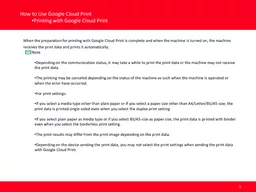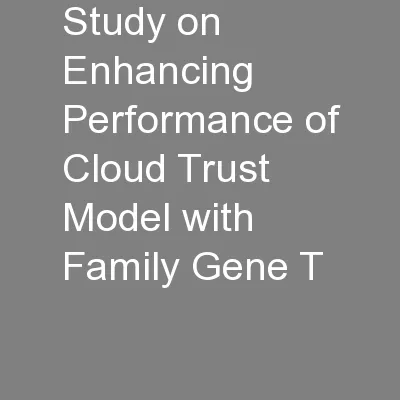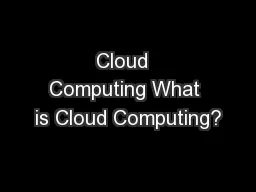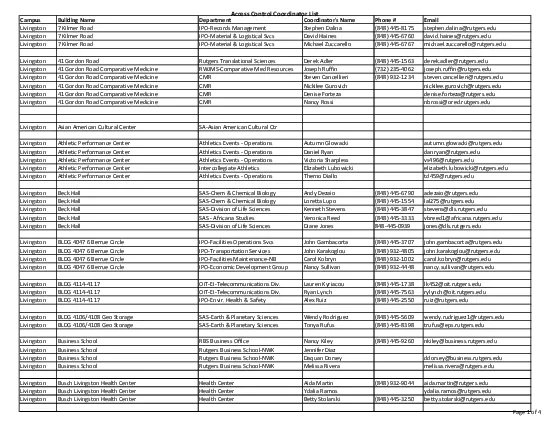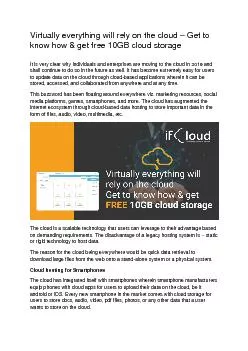PPT-14-848 Cloud Infrastructure
Author : ideassi | Published Date : 2020-08-06
Lecture 11 Fall 2019 Kesden Socrative httpsapisocrativecomrcNfu6Lp Todays Goals A brief introduction to relational databases A brief introduction to the SQL language
Presentation Embed Code
Download Presentation
Download Presentation The PPT/PDF document "14-848 Cloud Infrastructure" is the property of its rightful owner. Permission is granted to download and print the materials on this website for personal, non-commercial use only, and to display it on your personal computer provided you do not modify the materials and that you retain all copyright notices contained in the materials. By downloading content from our website, you accept the terms of this agreement.
14-848 Cloud Infrastructure: Transcript
Download Rules Of Document
"14-848 Cloud Infrastructure"The content belongs to its owner. You may download and print it for personal use, without modification, and keep all copyright notices. By downloading, you agree to these terms.
Related Documents


